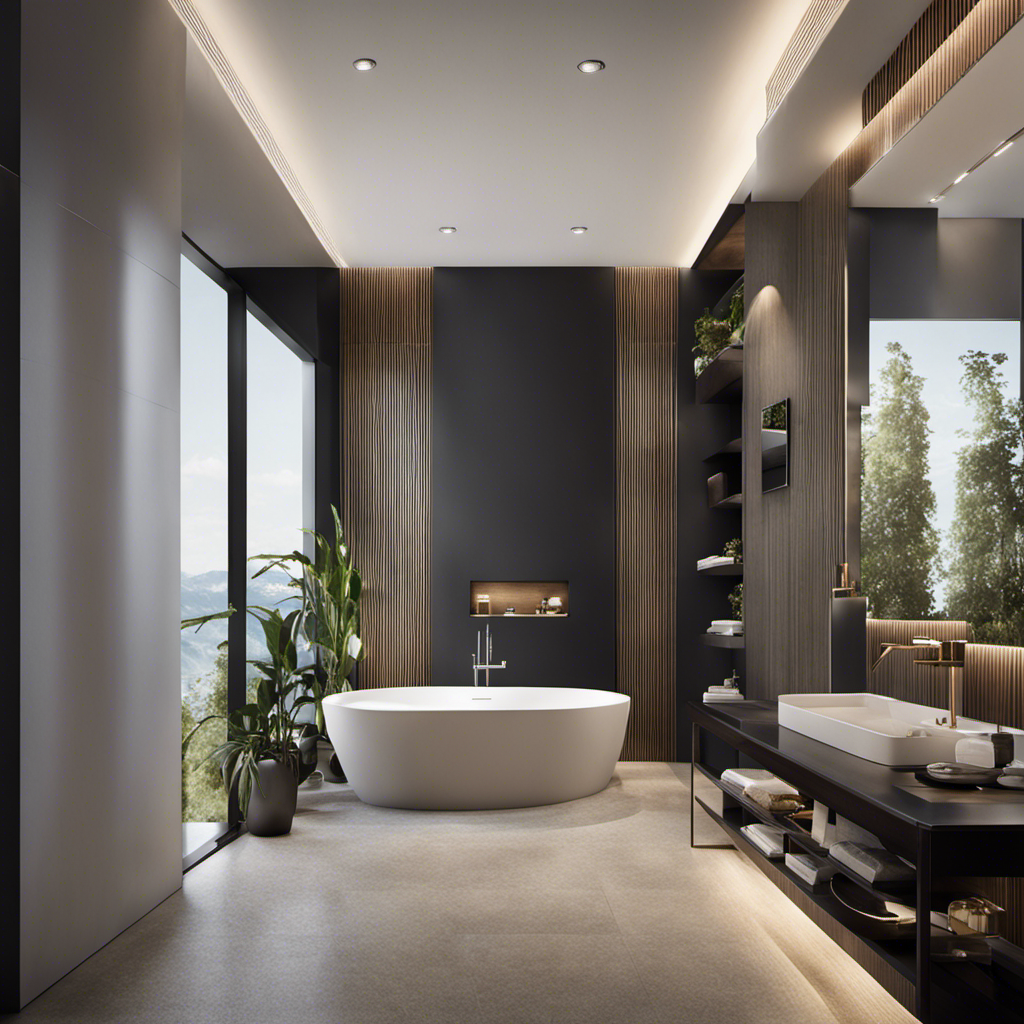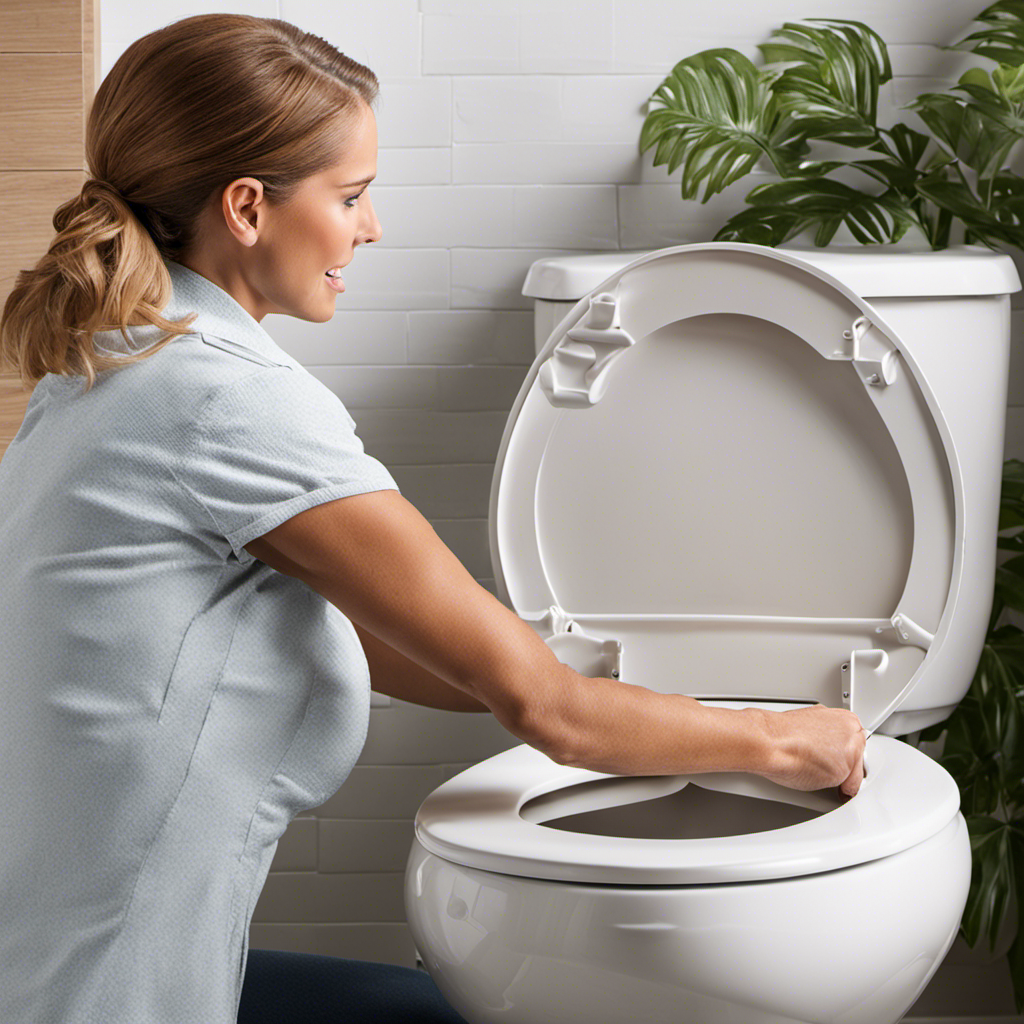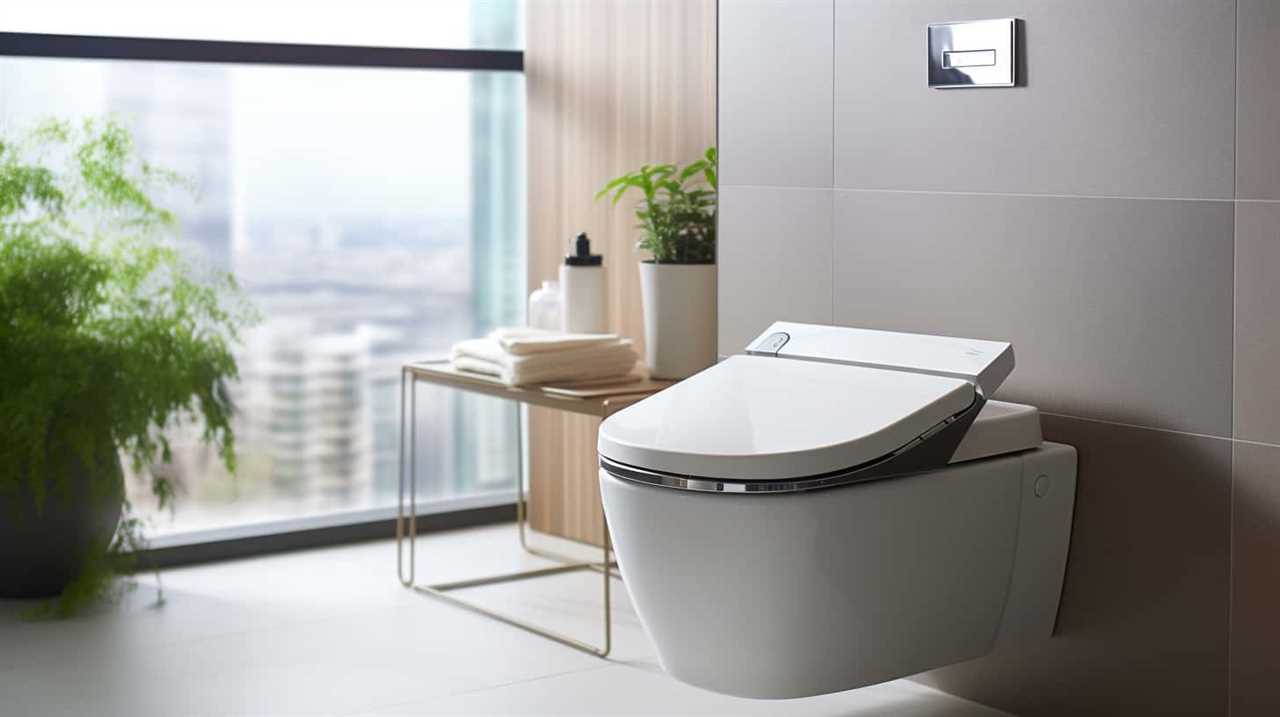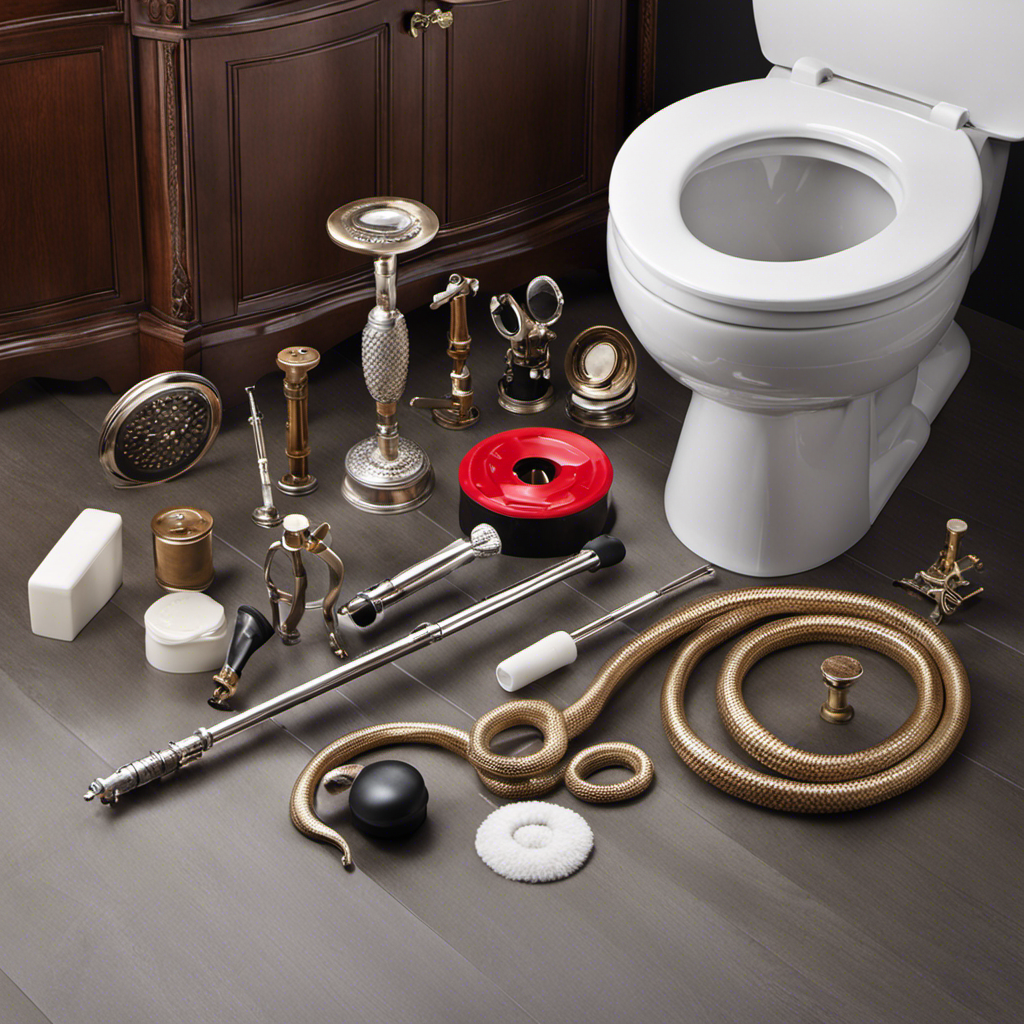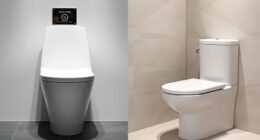I know what you’re thinking: why would anyone need a guide on how to choose a toilet? Well, let me tell you, picking the right toilet is more important than you might think. With so many factors to consider – from water efficiency ratings to flushing mechanisms – it can be overwhelming.
But fear not, because in this article, I’ll break it all down for you. By the end, you’ll be equipped with the knowledge to make an informed decision and find the perfect toilet for your needs.
Key Takeaways
- Consider the ease of installation and whether clear instructions and necessary parts are included.
- Take into account the price range and whether higher-priced toilets offer more features and better quality.
- Explore water efficiency ratings and choose a toilet that uses less water per flush.
- Consider the size and design options, such as compact or low-profile toilets, to fit specific bathroom needs.
Factors to Consider
When choosing a toilet, there are several factors to consider. The installation process is one of the most important aspects to think about. You want to make sure that the toilet you choose is easy to install and doesn’t require any complicated steps. Look for toilets that come with clear instructions and all the necessary parts for installation.
Additionally, the price range is another crucial factor to consider. Toilets can vary greatly in price, so it’s important to set a budget and find a toilet that fits within that range. Keep in mind that higher-priced toilets may offer more features and better quality, but there are also affordable options that can still meet your needs.
Types of Toilets
There are different types of toilets available for purchase. When choosing a toilet, it is important to consider factors such as installation requirements and cost considerations.
Here are four types of toilets to consider:
-
One-piece toilets: These toilets have a seamless design, with the tank and bowl fused together. They are easy to clean and install, but may be more expensive.
-
Two-piece toilets: These toilets have a separate tank and bowl, making them easier to transport and install. They are usually more affordable than one-piece toilets.
-
Wall-mounted toilets: These toilets are mounted on the wall, with the tank hidden behind it. They save space and are ideal for small bathrooms, but installation can be more complex.
-
Comfort-height toilets: These toilets are taller than standard toilets, providing additional comfort and accessibility. They are suitable for people with mobility issues or taller individuals.
Considering these different types of toilets and their installation requirements and cost considerations will help you make an informed decision.
Now, let’s explore the water efficiency ratings of toilets.
Water Efficiency Ratings
To make an informed decision, you should look at the water efficiency ratings of different toilets. Water efficiency ratings indicate how much water a toilet uses per flush, with lower ratings indicating less water usage. This is not only beneficial for the environment but can also help you save on your water bills.
When it comes to toilet brands, there are a variety of options available in the market. However, it is important to consider the water efficiency of each brand before making a purchase. Additionally, it is important to consider the cost comparison of different toilets.
While some may be more expensive upfront, they may offer greater water savings in the long run, making them a worthwhile investment.
Size and Design Options
If you’re looking for a smaller or more unique design, you’ll be pleased to know that there are a variety of size and design options available for toilets. Here are some options to consider:
-
Compact toilets: These toilets are designed to fit in smaller bathrooms or spaces where space is limited. They have a shorter depth and narrower width compared to standard toilets.
-
Low-profile toilets: These toilets have a shorter height, making them ideal for bathrooms with low ceilings or for people with mobility issues who find it difficult to sit down on a higher toilet seat.
-
One-piece toilets: These toilets have a seamless design, with the tank and bowl fused together. They are easier to clean and maintain compared to two-piece toilets.
-
Dual-flush toilets: These toilets have two flush options – one for liquid waste and another for solid waste. This helps in conserving water and reducing water bills.
When it comes to design, you can also choose from a wide range of toilet colors and toilet seat options to match your bathroom decor and personal preferences.
Flushing Mechanisms
When it comes to flushing mechanisms, you’ll find that dual-flush toilets offer two options for conserving water. These toilets have become increasingly popular due to their efficiency and eco-friendly features.
Dual-flush toilets have two buttons or handles, allowing users to choose between a full flush and a half flush. The full flush is used for solid waste and typically utilizes a pressure assisted system. This system uses air pressure to force water into the bowl, resulting in a powerful flush that effectively removes waste.
On the other hand, the half flush option is used for liquid waste and operates on a gravity feed system. This system relies on the force of gravity to empty the bowl, using less water and reducing water consumption.
Overall, dual-flush toilets provide a versatile and water-saving solution for any bathroom.
Maintenance and Cleaning Tips
One important aspect of maintaining a dual-flush toilet is regularly cleaning the buttons or handles. This helps to ensure that the flushing mechanism operates smoothly and efficiently. When it comes to cleaning the buttons or handles, there are a few options available.
Here are some eco-friendly alternatives to traditional toilet bowl cleaners:
-
Vinegar and baking soda: Mix equal parts vinegar and baking soda to create a paste. Apply the paste to the buttons or handles and scrub gently with a soft brush.
-
Lemon juice: Cut a lemon in half and rub it directly onto the buttons or handles. The citric acid in the lemon juice helps to remove stains and disinfect.
-
Hydrogen peroxide: Dilute hydrogen peroxide with water and apply it to the buttons or handles. Let it sit for a few minutes before wiping clean.
-
Castile soap: Mix a small amount of liquid castile soap with water and use a cloth to clean the buttons or handles. Rinse thoroughly to remove any soap residue.
Conclusion
In conclusion, choosing the right toilet is an important decision that should not be taken lightly. By considering factors such as water efficiency ratings, size and design options, flushing mechanisms, and maintenance tips, you can ensure that you find a toilet that meets your specific needs and preferences.
Just like a reliable and efficient engine powers a car, a well-chosen toilet will serve as the backbone of your bathroom, providing comfort and functionality for years to come.
